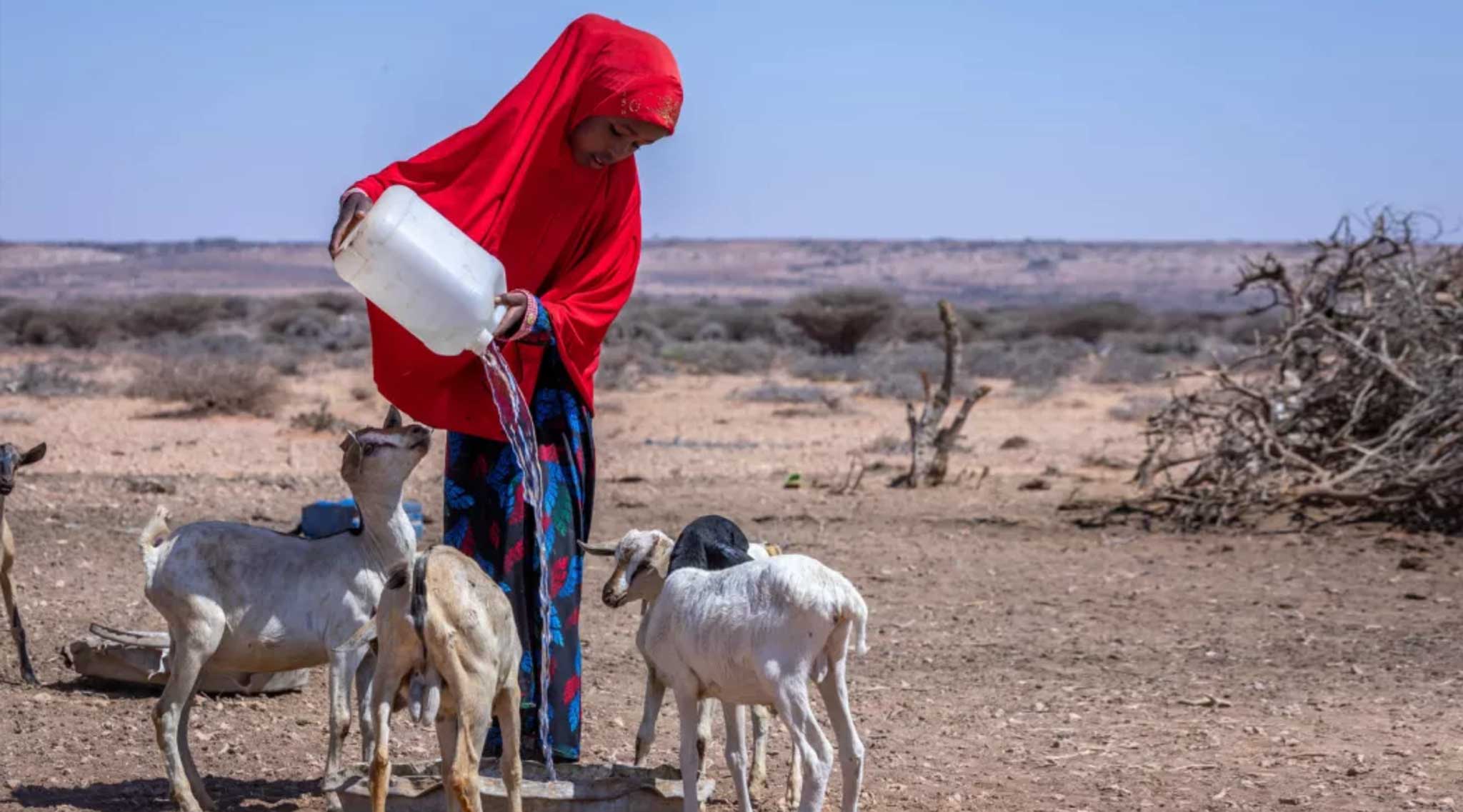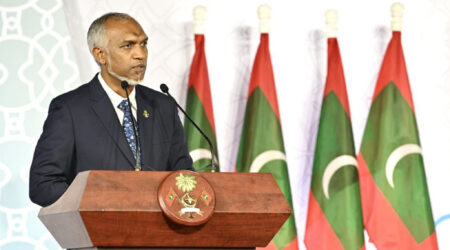By Sankalan Dey
As the winds of change sweep the globe, climate finance stands at the forefront of the battle against environmental degradation. Yet, amidst the cacophony of urgent appeals for action, the voices of the most vulnerable often go unheard. From the remote corners of indigenous lands to the bustling streets of urban centers, disparities in climate finance deepen the chasm of inequality. However, within these challenges lies an opportunity for transformative action that integrates gender equality, disability and social inclusion into the very fabric of climate finance.
In a world grappling with the existential threat of climate change, urgent action and substantial resources are essential for mitigation and adaptation efforts. However, amidst the pressing need for climate finance, disparities persist, exacerbating vulnerabilities and leaving marginalized communities behind. Women, indigenous peoples, and individuals with disabilities face disproportionate impacts, highlighting the imperative for inclusive climate finance strategies.
Did you know that women comprise 80% of climate refugees globally, bearing the brunt of climate-induced displacement?
Furthermore, indigenous communities, safeguarding 80% of the world’s biodiversity, face increasing threats to their lands due to climate change impacts. Meanwhile, individuals with disabilities, representing 15% of the global population, encounter heightened vulnerability during climate shocks, often facing barriers to accessing emergency services.
Despite these staggering statistics, current climate finance allocations fall short of addressing the specific needs of marginalized groups. Shockingly, only 1% of climate finance is directed towards disability-inclusive projects, leaving a glaring gap in support for this vulnerable population. Similarly, gender disparities persist, with a mere 0.01% of worldwide funding supporting projects that tackle the dual challenges of climate change and gender inequality.
However, amidst these challenges, hope emerges from innovative approaches and dedicated initiatives. The Asian Development Bank (ADB), with a substantial percentage of Climate Investment Funds (CIF) projects in the region incorporating gender perspectives, is committed to integrating gender perspectives into climate projects, with 68% of projects in the Indo-Pacific region. Moreover, collaborative efforts like the Indo-Pacific Triangular Cooperation (IPTDC) Fund, led by countries like India and France, prioritise gender equality in climate action, signalling a shift towards more inclusive approaches.
Take, for instance, India’s stance on gender mainstreaming in climate action, where state action plans on climate change (SAPCCs) vary in their approaches to gender inclusion. While some states portray women primarily as victims, others recognise their role as change agents, driving adaptation efforts within households and communities. Similarly, the Green Climate Fund’s (GCF) structured framework for integrating gender equality, disability, and social inclusion (GEDSI) into project design exemplifies a proactive approach to addressing disparities in climate finance.
To bridge the gap in climate finance and promote inclusivity, stakeholders must adopt comprehensive strategies encompassing direct financing mechanisms and foster an enabling environment for gender and disability inclusion. From small grants for local organizations to strengthening gender equality efforts within ministries of finance, a multi-faceted approach is essential for meaningful change.
One key aspect of inclusive climate finance is the recognition of the unique vulnerabilities and capacities of different groups. For instance, women often have distinct roles and responsibilities within households and communities, which can influence their experiences of climate change impacts and their ability to adapt. Similarly, individuals with disabilities may face additional barriers in accessing resources and services during climate-related disasters, highlighting the need for tailored interventions that address their specific needs.
It is through the involvement of marginalized groups in decision-making processes and project implementation initiatives are more likely to reflect the priorities and realities of those most affected by climate change quickly and effectively. This participatory approach enhances the relevance and legitimacy of interventions and builds local capacity and resilience in the long run.
Furthermore, investing in gender and disability-inclusive climate projects can have broader social and economic benefits. For example, by empowering women as agents of change and promoting the rights and inclusion of individuals with disabilities, such initiatives contribute to more equitable and inclusive societies. Moreover, by addressing the root causes of gender and disability inequalities, they help create enabling environments supporting sustainable development and climate resilience for all.
Thus, it becomes evident that addressing disparities in climate finance requires a holistic approach that considers the intersecting challenges marginalized groups face. For example, initiatives focusing on gender and disability inclusion can yield significant benefits in terms of resilience-building and promoting social equity and sustainable development.
Inclusive climate finance is a moral imperative and a pragmatic necessity in the face of climate change. By integrating gender and disability perspectives into finance mechanisms and project design, we can ensure that the most vulnerable are not left behind and that our efforts to build a more resilient and sustainable future are genuinely inclusive and equitable. As we strive to address the urgent challenges of climate change, let us remember that our actions today will shape the world we leave for future generations.
——————————————————————————–
What is Climate Finance?

Climate finance refers to the flow of funds from developed to developing countries to mitigate and adapt to climate change. It encompasses various financial mechanisms, instruments, and investments aimed at reducing greenhouse gas emissions, promoting renewable energy, enhancing resilience to climate impacts, and supporting sustainable development.
There are several channels through which climate finance is mobilized and delivered:
Public Finance: Governments, both domestically and internationally, allocate funds to support climate-related projects and initiatives. This includes bilateral and multilateral aid, as well as contributions to climate funds such as the Green Climate Fund (GCF) and the Global Environment Facility (GEF).
Private Finance: Private sector investment plays a crucial role in climate finance, with businesses investing in renewable energy projects, energy efficiency measures, sustainable agriculture, and other climate-resilient activities. Financial institutions such as banks, venture capital firms, and impact investors provide capital for these projects.
Carbon Markets: Carbon pricing mechanisms, such as emissions trading schemes and carbon taxes, create financial incentives for businesses to reduce their carbon footprint. Revenue generated from these schemes can be reinvested in climate mitigation and adaptation efforts.
Climate Funds: International climate funds, such as the Green Climate Fund, provide financial support to developing countries for climate action. These funds aim to mobilize resources at scale and channel them towards projects that address the most urgent climate challenges.
Innovative Financing Mechanisms: Various innovative financing mechanisms have emerged to address the challenges of climate finance, including green bonds, climate insurance, micro-finance for climate resilience, and crowdfunding platforms dedicated to climate projects.
Overall, climate finance is essential for enabling developing countries to transition to low-carbon, climate-resilient economies and for achieving the goals set out in international agreements such as the Paris Agreement. However, there are ongoing debates and challenges surrounding the mobilization, allocation, and effectiveness of climate finance, particularly in ensuring that it reaches those most in need and supports transformative climate action.
————————————————————————–
Sankalan Dey is a Research Associate working for CUTS International, a global public policy research and advocacy group.
Disclaimer: The views expressed are not necessarily those of The South Asian Times












